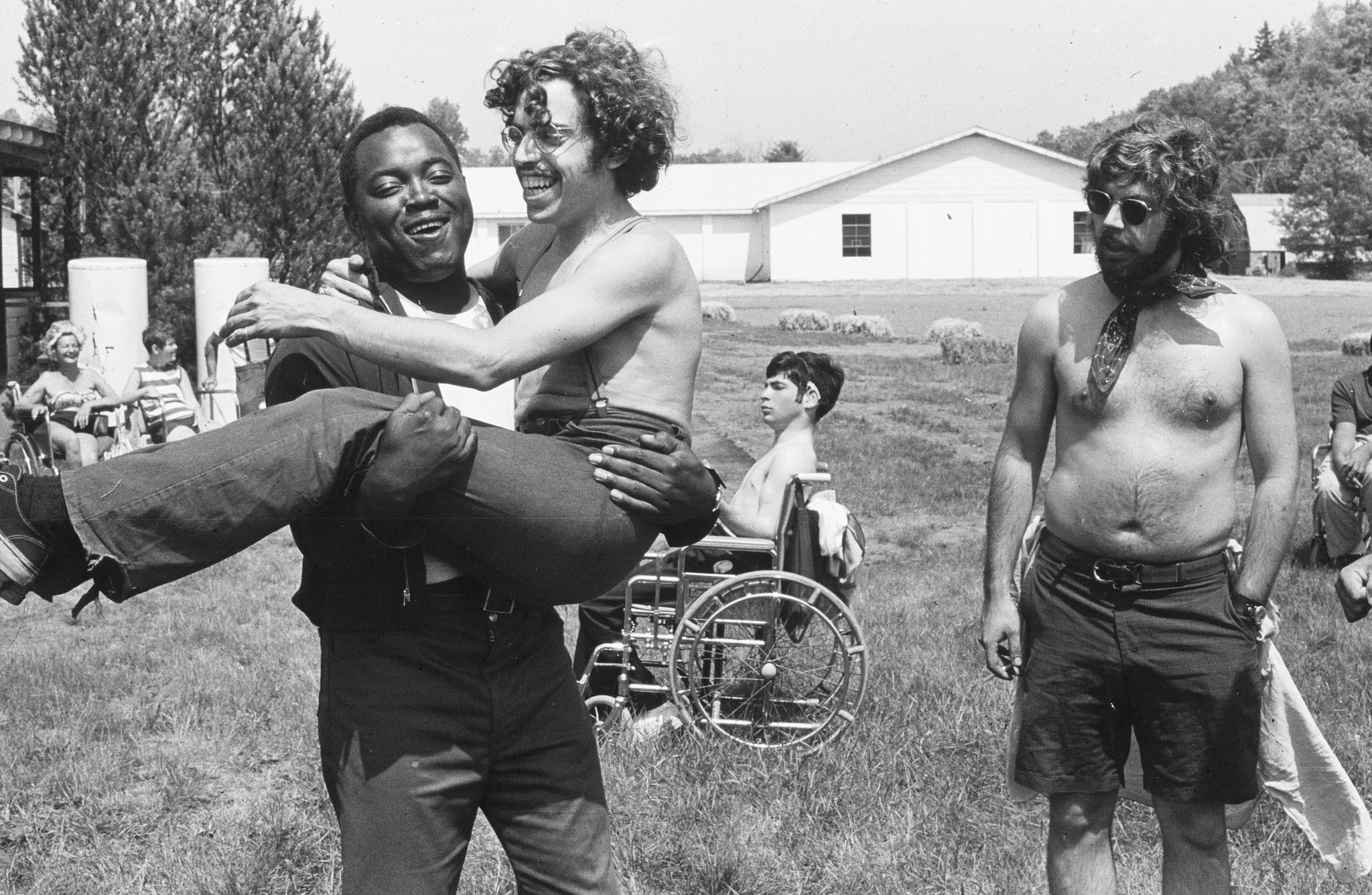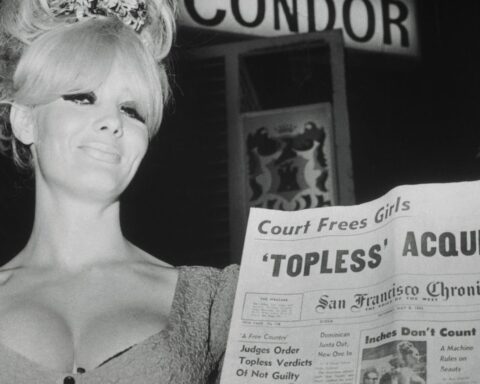Crip Camp: A Disability Revolution
(USA, 104 min.)
Dir. James Lebrecht, Nicole Newnham
The Obamas had a high bar to meet after American Factory won the Oscar, but Crip Camp grabs it. The film marks the latest documentary from the Barack and Michelle Obama’s Higher Ground production company. As with Julia Reichert and Steven Bognar’s American Factory, Crip Camp is a thoughtful and absolutely necessary portrait of America at a time of change. The film, this year’s Audience Award winner for American documentary at Sundance, offers an inspiring story of the civil rights movement for people with disabilities. Crip Camp feels like a landmark for inclusive filmmaking.
Crip Camp explores one seed of the movement towards equality. It looks at the voices from the movement that emerged from Camp Jened. A summer camp for young people with disabilities, Camp Jened ran from 1951 to 1977 until it closed following financial woes. However, these 26 years produced a generation of activists and inspired waves of change. The film sees this cultural revolution through the eyes of several Jened campers and their counsellors.
Among them is James Lebrecht, who directed Crip Camp with Nichole Newnham and shares his story about finding peace, love, and acceptance on the campgrounds. He explains how being born with spina bifida often put him at a remove from friends as they grew through adolescence. Through his perspective, Crip Camp conveys how the free-loving spirit and liberalization of the ’60s remained elusive. Although he says he dreamed to grow up and run acoustics for the Grateful Dead, virtually all schools, concert venues, and public spaces simply weren’t wheelchair accessible. He recalls always being the odd-one-out and growing up in a community where the rights of the disabled weren’t even considered. Lebrecht shares how his first trip to Camp Jened allowed him to experience the bliss of adolescence he often witnessed from afar.
Various attendees who came of age at Camp Jened join their director in reminiscing about the summer haven. They liken it to a utopian ideal, but Crip Camp isn’t just an exercise in nostalgia. This discussion is sobering stuff. It’s a sad reminder that ideals can easily be reality if more people in power would do the right thing.
The campers and their counsellors share memories of a place that put everyone on equal footing. Speakers recall how Camp Jened didn’t discriminate. The archival footage, moreover, demonstrates a strong range of abilities as the camp provided a rare space. No matter one’s mobility or cognitive abilities, one could join fellow teens in playing baseball or fooling around. The humorous archival footage, which includes a collage of video and still photography, provides snapshots of a warm sunny haven with a freewheeling atmosphere. (One plum shot sees former camp director Larry Allison joke that he’s digging holes to “teach the cripples some lessons.”) Without romanticising or sugar-coating the place, the images of Camp Jened are an idyllic breeding ground for personal awakenings and collective spirit.
The campers could not stress more clearly the benefits this summer haven had on their confidence. Denise and Neil Jacobson, two campers who married years later, share the incredible feelings of doing activities that they could only watch from a distance at home. Neil even reveals that a camp counsellor gave him his first sexual experience, which he found so life affirming that it gave him the confidence to score a date the next day. Crip Camp looks frankly at the sexual appetites of the disabled—a rarity in film—and finds an especially humorous archival sequence that examines a crabs outbreak in the bunks. The young campers natter excitedly to the camera when other teens might be bashful. Spreading the itch was a source of pride between the campers because it created a collective realization that they too could be sexual beings.
The film also addresses such subjects with utter seriousness. Denise, on the other hand, has a much different tone to the story of her first time. She shares the awful experience of going to the hospital as an adult following her first sexual experience. Denise recalls undergoing an unnecessary appendectomy because doctor assumed her pain wasn’t gynecological—it never occurred to him that a woman with cerebral palsy could be sexually active. However, Denise adds that the humiliating experience inspired her to pursue a Master’s degree in human sexuality.
Crip Camp features several stories like Denise’s that see the campers use difficult moments to push for change. The heart of the film arguably belongs to Judy Heumann, who took an early leadership role at the camp, organizing meals and using her booming voice to rally the troops. Heumann, who is in a wheelchair due to contracting polio in her youth, situates her years at Camp Jened as formative experience for becoming a leader in the fight for civil rights. The archival footage and the interviews also situate Camp Jened as an early intersection of diverse civil rights movements.
The film uses Heumann’s story to make the narrative leap from the campground to the White House. It charts the growing effort of tireless fighters like Heumann to have rights for mobility and accessibility recognized as human rights. Through sit-ins, occupations, rallies with Black Panthers, and an intersection with the anti-war movement as Vietnam veterans came home with experienced new forms of discrimination, the film delivers a thoroughly dynamic portrait of the hard fought struggle for rights for the disabled. As Heumann and others hold their grounds in the fight, Crip Camp offers some damning images of able-bodied politicians who advocate a philosophy of “separate but equal” and argue that costs and conveniences outweigh civil rights.
More effective than the sunny footage from Camp Jened are the archival shots of campers in the city, wheeling through traffic because they can’t get over a curb. Even more jarring is a 1972 news sequence in which Geraldo Rivera exposes the inhumane treatment of the disabled at Willowbrook, a state school where people with disabilities were shut away. This “out of sight, out of mind” philosophy of the time extended to all reaches of society, but this sequence depicts the polar opposite of Camp Jened. As Rivera tours an impersonal institution where inmates sat in their own filth and struggled to feed themselves, Crip Camp offers a sobering snapshots of the world from which the camp offered an alternative.
The tonal shift between the first act and the second triumphantly demonstrates the role Camp Jened played in igniting the fight for civil rights. While the sunny ways of Jened offer a crowd-pleasing hook, the film arguably finds greater drama when it leaves the utopian bliss of the campground and roams America’s streets. Crip Camp soars with a revolutionary spirit that can’t be beat.
Crip Camp is now streaming on Netflix.













